


Books in series

Ideas, Images, and Methods of Portrayal
Insights Into Classical Arabic Literature and Islam
2005

The Heritage of Arabo-Islamic Learning
Studies Presented to Wadad Kadi (Islamic History and Civilization: Studies and Texts, 122)
2015

Taste of Modernity
Sufism, Salafiyya & Arabism in Late Ottoman Damascus
2001

Patronate And Patronage in Early And Classical Islam
2005

Islamic Art in the 19th Century
Tradition, Innovation, And Eclecticism
2005

The Fatimid Armenians
Cultural and Political Interaction in the Near East
1997

The Islamic Scholarly Tradition
Studies in History, Law, and Thought in Honor of Professor Michael Allan Cook
2011

Medieval Jerusalem and Islamic Worship
Holy Places, Ceremonies, Pilgrimage
1994

Muslims, Jews, and Pagans
Studies on Early Islamic Medina
1995

The Fortress of the Raven
Karak in the Middle Islamic Period, 1100-1650
2008

Islamische Gelehrtenkultur in Nordindien
Entwicklungsgeschichte Und Tendenzen Am Beispiel Von Lucknow
1997

The European Image of God and Man
A Contribution to the Debate on Human Rights
2009

Commerce, Culture, and Community in a Red Sea Port in the Thirteenth Century
The Arabic Documents from Quseir. Islamic History and Civilization. Stud
2004

The Companions of the Prophet
A Study of Geographical Distribution and Political Alignment
2003

Society and Culture in the Early Modern Middle East
Studies on Iran in the Safavid Period Studies
2003

The Construction of Knowledge in Islamic Civilization
Qudāma B. Ja'far and His Kitāb Al Kharāj Wa-Sinā'at Al-Kitāba
2002
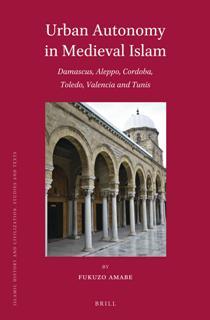
Urban Autonomy in Medieval Islam
Damascus, Aleppo, Cordoba, Toledo, Valencia and Tunis
2016

Accusations of Unbelief in Islam A Diachronic Perspective on Takfīr
2015

The Emergence of Early Sufi Piety and Sunni Scholasticism
Abdallah B. Al-mubarak and the Formation Sunni Identity in the Second Islamic Century
2016
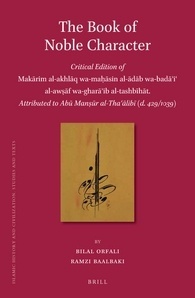
The Book of Noble Character
2015
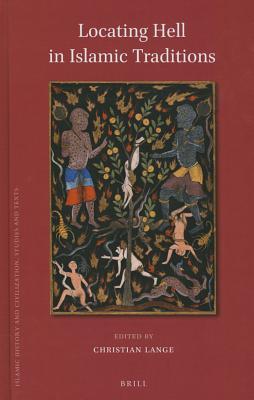
Locating Hell in Islamic Traditions
2015
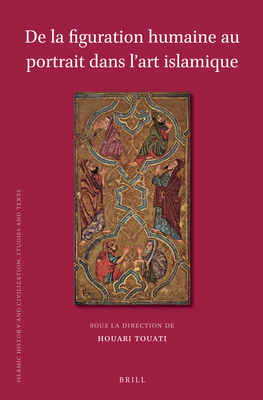
De La Figuration Humaine Au Portrait Dans L’art Islamique (Islamic History and Civilization, 116)
1863

Islamic Cultures, Islamic Contexts
Essays in Honor of Professor Patricia Crone
2014

Books and Written Culture of the Islamic World
Studies Presented to Claude Gilliot on the Occasion of His 75th Birthday (Islamic History and Civilization, 113)
2014

From Bawi to Marw
Documents from the Medieval Muslim World; Proceedings of the 4th Conference of the International Society for Arabic Papyrology, ... 2009
2014

An Arabic Musical and Socio-Cultural Glossary of Kitab al-Aghani (Islamic History and Civilization
Studies and Texts, 110)
2014

Material Evidence and Narrative Sources
Interdisciplinary Studies of the History of the Muslim Middle East
2014

Early Ibad?i Theology
Six "Kalam" Texts by Abd Allah B. Yazid Al-Fazari
2014

Unity in Diversity
Mysticism, Messianism and the Construction of Religious Authority in Islam (Islamic History and Civilization, 105)
2013

Al-?Ira
Eine Arabische Kulturmetropole Im Spatantiken Kontext
2013

Mysticism and Philosophy in al-Andalus
Ibn Masarra, Ibn al-Arabi and the Ismaili Tradition
2013

Crisis and Continuity at the Abbasid Court
Formal and Informal Politics in the Caliphate of Al-Muqtadir
2013

The Intensification and Reorientation of Sunni Jihad Ideology in the Crusader Period
2012

Herbal Medicine in Yemen
Traditional Knowledge and Practice, and Their Value for Today's World
2012

Sufism, Black and White
A Critical Edition of Kitāb al-Bayāḍ wa-l-Sawād by Abū l-Ḥasan al-Sīrjānī
2012

Early Mamluk Syrian Historiography
Al-Yunini's Dhayl Mir'at Al-Zaman (1) (Islamic History and Civilization. Studies and Texts, V. 21)
1998

Commerce, Culture, and Community in a Red Sea Port in the Thirteenth Century
The Arabic Documents from Quseir
2004

Letters of a Sufi Scholar
The Correspondence of `Abd al-Ghani al-Nabulus? (1641-1731) (Islamic History and Civilization, 74)
2009

Intimate Invocations
Al-Ghazzī's Biography of 'Abd Al-Ghanī Al-Nābulusī (1641-1731) (Islamic History and Civilization)
2011

Analysing Muslim Traditions
Studies in Legal, Exegetical and Maghazi Hadith
2009

The Transmission and Dynamics of the Textual Sources of Islam
Essays in Honour of Harald Motzki
2011

Food and Foodways of Medieval Cairenes
2011

The Dragon in Medieval East Christian and Islamic Art
With a Foreword by Robert Hillenbrand
2011

Basran Mutazilite Theology
Abu Ali Muhammad B. Khallad's Kitab Al-usul and Its Reception (Islamic History and Civilization, 85)
2010

The Oliphant
Islamic Objects in Historical Context
2004

Facts and Artefacts - Art in the Islamic World
Festschrift for Jens Kröger on His 65th Birthday
2007

After One Hundred Years
The 1910 Exhibition "Meisterwerke Muhammedanischer Kunst" Reconsidered
2010

Umayyad Legacies
Medieval Memories from Syria to Spain
2010

Sunnitischer Tafsir in Der Modernen Islamischen Welt
Akademische Traditionen, Popularisierung Und Nationalstaatliche Interessen (Texts and Studies on the Qur'an, 7)
2010
Histories of the Middle East
Studies in Middle Eastern Society, Economy and Law in Honor of A.L. Udovitch
2010

Papyrology And The History Of Early Islamic Egypt
2004

From Al-andalus to Khurasan
Documents from the Medieval Muslim World
2006

Documents and the History of the Early Islamic World (Islamic History and Civilization, 111)
2014

The Nuṣayrī-ʿAlawīs
An Introduction to the Religion, History and Identity of the Leading Minority in Syria
2009

Die Eroberung Von Damaskus
Quellenkritische Untersuchung Zur Historiographie in Klassisch-Islamischer Zeit (Islamic History and Civilization, 76)
2009

Beyond Death
The mystical teachings of ʻAyn al-Quḍāt al-Hamadhānī
2010

The Unveiling of Secrets (Kashf Al-Asrār)
The Visionary Autobiography of Rūzbihān Al-Baqlī (1128-1209 A.D.) (Islamic History and Civilization)
2005

Sufism in an Age of Transition
ʿumar Al-Suhrawardī And the Rise of the Islamic Mystical Brotherhoods
2008

The Chronicles and Annalistic Sources of the Early Mamluk Circassian Period
2007

Beyond the Legacy of Genghis Khan
2006

The Making of a Forefather
Abraham in Islamic and Jewish Exegetical Narratives
2006

The Last Pagans of Iraq
Ibn Wahshiyya And His Nabatean Agriculture
1600

Moscheen Und Madrasabauten in Iran 1785-1848
Architektur Zwischen Rückgriff Und Neuerung (Islamic History and Civilization)
2005

Egypt's Adjustment to Ottoman Rule
Institutions, Waqf and Architecture in Cairo, 16th and 17th Centuries
1994
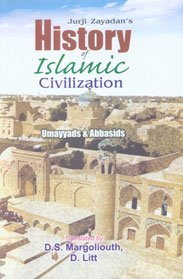
History of Islamic Civilization
Umayyads and Abbasids Pt. 4
2013

شعرية التأريخ الإسلامي
تفكيك تاريخ الطبري
2004

The Revolution Which Toppled the Umayyads
Neither Arab Nor 'Abbasid
2003

Method and Theory in the Study of Islamic Origins
2003

Texts, Documents, and Artefacts
Islamic Studies in Honour of D.S. Richards
2003

Verbranntes Ufer
Auswirkungen Mamlukischer Seepolitik Auf Beirut Und Die Syro-Palastinensische Kuste (1250-1517) (Islamic History & Civilization)
2001

Traktat Über Die Derwischmützen (Risāle-I Tāciyye) Des Müstaqīm-Zāde Süleymān Sādeddin (St. 1788) (Islamic History and Civilization)
2001

Excellence and Precedence
Medieval Islamic Discourse on Legitimate Leadership
2002

The Great Mosque of Damascus
Studies in the Makings of an Umayyad Visual Culture
2000

The Exoteric Ah?mad Ibn Idris
A Sufi's Critique on the Madhahib and the Wahhabis (Islamic History and Civilization, 31)
1999

Islamic Mysticism Contested
Thirteen Centuries of Controversies and Polemics
1999

Timbuktu and the Songhay Empire
Al-Sa'di's Ta'rikh al-Sudan Down to 1613 and Other Contemporary Documents
1999
Authors

جرجي زيدان Jurji Zaydan (1861–1914) was one of the most important Arab writers of the late nineteenth and early twentieth centuries. He founded Al-Hilal, the foremost cultural and literary journal in the Arab world. Zaydan is the author of two canonical, multivolume histories of Arabic literature and Islamic civilization and twentythree historical novels.


NOTE: There is more than one author with this name on Goodreads. Hugh^Kennedy Has studies Arabic at the Middle East Centre for Arabic Studies. Went on to read Arabic, Persian & History at Cambridge. Taught in the Department of Medieval History at St Andrews since 1972, and was elected Fellow of the Royal Society of Edinburgh (2000).

